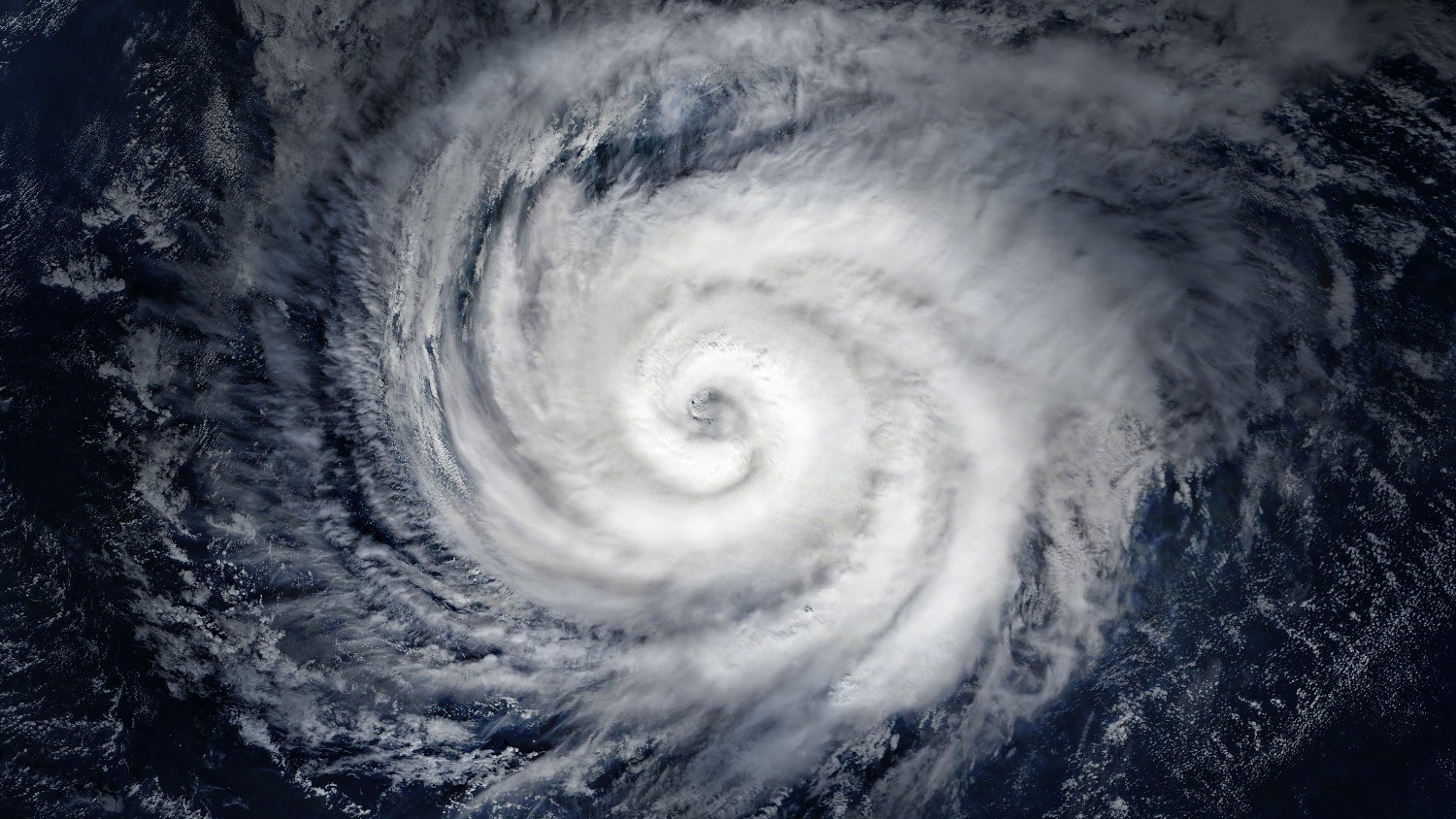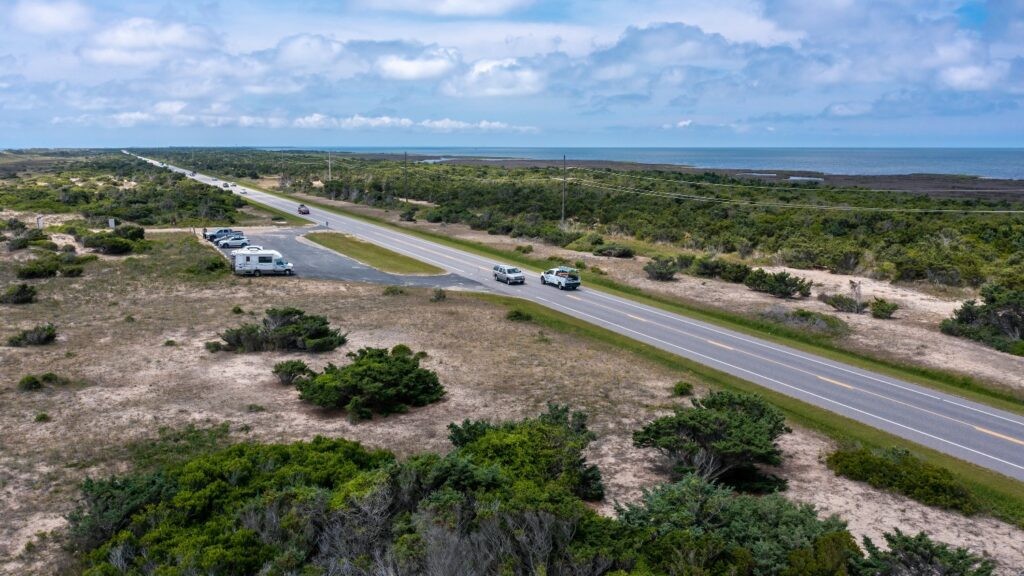Climate change significantly impacts travel and tourism. Let SIXT.VN guide you through understanding these effects and planning sustainable trips to Vietnam. Discover how to navigate climate-related challenges and still enjoy unforgettable experiences, promoting responsible travel, eco-friendly accommodations, and supporting local communities.
Contents
- 1. Understanding the Interplay: How Climate Change Impacts Tourism
- 2. What Are the Specific Ways Climate Change Disrupts Travel?
- 3. Which Destinations Are Most Vulnerable to Climate-Related Tourism Impacts?
- 4. How Can Tourism Businesses Adapt to Climate Change?
- 5. What Role Does Sustainable Tourism Play in Mitigating Climate Change?
- 6. How Can Travelers Make More Climate-Conscious Travel Choices?
- 7. What Government Policies Can Support Climate-Resilient Tourism?
- 8. How Do Cultural and Heritage Sites Face Climate Change Impacts in Tourism?
- 9. How Can Tourists’ Emotional Connection to Destinations Influence Climate Action?
- 10. What Are the Future Trends in Climate and Tourism Research?
- FAQ: Climate Change and Tourism
- 1. How does climate change affect travel plans?
- 2. What types of tourism are most at risk from climate change?
- 3. Can sustainable tourism help combat climate change?
- 4. What can travelers do to reduce their carbon footprint while traveling?
- 5. Are there destinations that are safer from climate change impacts?
- 6. What are some examples of climate-resilient tourism practices?
- 7. How does climate change affect cultural heritage sites?
- 8. Can tourists’ emotional connection to destinations influence climate action?
- 9. What is the role of governments in supporting climate-resilient tourism?
- 10. What future research trends will help inform climate and tourism strategies?
1. Understanding the Interplay: How Climate Change Impacts Tourism
Yes, climate change dramatically affects tourism. Its influence spans from altering travel seasons and damaging infrastructure to shifting destination preferences and increasing operational costs. Understanding these impacts is crucial for sustainable tourism planning.
Climate change brings about significant shifts in weather patterns, increasing the frequency and intensity of extreme weather events. This instability directly affects the tourism industry, which is highly dependent on predictable environmental conditions. According to the United Nations World Tourism Organization (UNWTO), destinations that rely on specific climates for tourism activities, such as beach holidays, winter sports, or wildlife viewing, are particularly vulnerable.
For instance, coastal areas face the threat of rising sea levels and more frequent storms, damaging infrastructure and eroding beaches, making them less attractive to tourists. Mountain regions are experiencing shorter and less reliable snow seasons, impacting winter sports tourism. Moreover, changes in temperature and precipitation patterns can alter ecosystems, affecting wildlife and natural attractions that draw visitors.
The economic consequences of these climate-related impacts are substantial. Destinations may see a decline in visitor numbers, leading to reduced revenue for local businesses and governments. The cost of repairing damaged infrastructure and adapting to changing environmental conditions can also strain local economies.
SIXT.VN recognizes the importance of addressing these challenges. We work with local partners to promote sustainable practices, such as reducing carbon emissions, conserving water and energy, and supporting local communities. By choosing eco-friendly accommodations and transportation options, tourists can minimize their environmental footprint and contribute to the long-term health of the destinations they visit.
2. What Are the Specific Ways Climate Change Disrupts Travel?
Climate change disrupts travel in several ways: it causes extreme weather events, alters travel seasons, damages infrastructure, shifts destination appeal, and increases operational costs for tourism businesses. These disruptions affect travel experiences and industry stability.
- Extreme Weather Events: Climate change intensifies extreme weather events such as hurricanes, floods, droughts, and heat waves. These events can disrupt travel plans, damage infrastructure, and pose risks to tourists’ safety.
- Altered Travel Seasons: Warmer temperatures and changing precipitation patterns can shorten or shift traditional travel seasons. For example, ski resorts may experience shorter snow seasons, while coastal destinations may face more frequent storms during peak tourist periods.
- Infrastructure Damage: Rising sea levels, coastal erosion, and extreme weather events can damage critical infrastructure such as airports, roads, hotels, and attractions, making it difficult for tourists to access and enjoy destinations.
- Shifting Destination Appeal: Climate change can alter the appeal of certain destinations. For example, coral reefs are bleaching due to ocean acidification, impacting diving and snorkeling tourism. Similarly, national parks and wildlife reserves may experience changes in vegetation and animal populations, affecting wildlife viewing opportunities.
- Increased Operational Costs: Tourism businesses may face higher operational costs due to climate change. These costs can include increased insurance premiums, the need for climate-resilient infrastructure, and investments in water and energy conservation measures.
SIXT.VN is committed to helping travelers navigate these disruptions. We provide up-to-date information on weather conditions and travel advisories, offer flexible booking options, and partner with businesses that are taking steps to reduce their environmental impact. By planning ahead and making informed choices, travelers can minimize the risks associated with climate change and enjoy safe and sustainable travel experiences.
3. Which Destinations Are Most Vulnerable to Climate-Related Tourism Impacts?
Certain destinations are particularly vulnerable to climate-related tourism impacts. Coastal regions, island nations, mountain areas, and regions dependent on specific ecosystems face the greatest risks. These areas often rely heavily on tourism revenue, making them especially sensitive to climate change effects.
- Coastal Regions: Coastal destinations are at risk from rising sea levels, coastal erosion, and more frequent and intense storms. These hazards can damage beaches, infrastructure, and coastal ecosystems, impacting tourism activities such as swimming, sunbathing, and water sports.
- Island Nations: Island nations are highly vulnerable to climate change due to their small size, limited resources, and dependence on tourism. Rising sea levels, coral reef degradation, and extreme weather events can threaten their economies and livelihoods.
- Mountain Areas: Mountain regions are experiencing shorter and less reliable snow seasons, impacting winter sports tourism. Glaciers are melting, altering landscapes and water resources. Changes in temperature and precipitation patterns can also affect hiking and trekking opportunities.
- Ecosystem-Dependent Regions: Regions that rely on specific ecosystems for tourism, such as coral reefs, rainforests, or wildlife reserves, are vulnerable to climate change impacts. Changes in temperature, precipitation, and sea levels can alter these ecosystems, affecting biodiversity and tourism activities.
SIXT.VN offers services to some of the most popular destinations in Vietnam.
- Ha Long Bay: Famous for its stunning limestone karsts and emerald waters, Ha Long Bay is a UNESCO World Heritage Site and a major tourist draw.
- Hoi An: A charming ancient town with well-preserved architecture, Hoi An attracts visitors with its tailor shops, delicious cuisine, and cultural heritage.
- Mekong Delta: Known for its floating markets, rice paddies, and intricate river systems, the Mekong Delta offers a unique cultural and natural experience.
- Sapa: A mountainous region in northern Vietnam, Sapa is famous for its breathtaking landscapes, trekking routes, and vibrant ethnic minority cultures.
- Phu Quoc Island: With its pristine beaches, lush forests, and laid-back atmosphere, Phu Quoc Island is a popular destination for beach holidays and water sports.
To mitigate these risks, SIXT.VN promotes sustainable tourism practices in Vietnam, encouraging travelers to support local communities, conserve resources, and minimize their environmental impact.
 Ha Long Bay scenic cruise on calm waters
Ha Long Bay scenic cruise on calm waters
4. How Can Tourism Businesses Adapt to Climate Change?
Tourism businesses can adapt to climate change by implementing strategies to reduce their environmental impact, diversify their offerings, invest in climate-resilient infrastructure, and engage with local communities. Proactive adaptation is essential for ensuring long-term sustainability and competitiveness.
- Reducing Environmental Impact: Tourism businesses can reduce their environmental impact by implementing measures to conserve water and energy, reduce waste, and minimize carbon emissions. This can include investing in renewable energy sources, implementing water-saving technologies, and promoting sustainable transportation options.
- Diversifying Offerings: Tourism businesses can diversify their offerings to reduce their reliance on climate-sensitive activities. This can include offering alternative activities that are less dependent on weather conditions, such as cultural tours, cooking classes, or wellness retreats.
- Investing in Climate-Resilient Infrastructure: Tourism businesses can invest in climate-resilient infrastructure to protect their assets from extreme weather events and rising sea levels. This can include elevating buildings, reinforcing coastal defenses, and installing backup power systems.
- Engaging with Local Communities: Tourism businesses can engage with local communities to build support for climate adaptation efforts. This can include providing education and training opportunities, supporting local conservation initiatives, and promoting sustainable tourism practices.
SIXT.VN partners with businesses in Vietnam that are committed to these adaptation strategies. When booking through SIXT.VN, travelers can be confident that they are supporting businesses that are working to minimize their environmental impact and contribute to the long-term sustainability of the tourism industry. We are available at Address: 260 Cau Giay, Hanoi, Vietnam. Hotline/Whatsapp: +84 986 244 358. Website: SIXT.VN.
5. What Role Does Sustainable Tourism Play in Mitigating Climate Change?
Sustainable tourism plays a crucial role in mitigating climate change by reducing the environmental impact of travel, promoting responsible resource management, and supporting local communities. By adopting sustainable practices, the tourism industry can contribute to global efforts to combat climate change.
- Reducing Environmental Impact: Sustainable tourism practices aim to minimize the environmental impact of travel by reducing carbon emissions, conserving water and energy, and reducing waste. This can include promoting sustainable transportation options, using renewable energy sources, and implementing waste reduction programs.
- Promoting Responsible Resource Management: Sustainable tourism promotes responsible resource management by protecting natural and cultural resources, preserving biodiversity, and supporting local conservation initiatives. This can include establishing protected areas, promoting eco-tourism, and supporting sustainable agriculture.
- Supporting Local Communities: Sustainable tourism supports local communities by providing economic opportunities, promoting cultural preservation, and empowering local residents to participate in tourism development. This can include hiring local staff, sourcing local products, and supporting community-based tourism initiatives.
SIXT.VN is committed to promoting sustainable tourism in Vietnam. We work with local partners to offer eco-friendly accommodations, sustainable transportation options, and responsible tour activities. By choosing SIXT.VN, travelers can be confident that they are supporting sustainable tourism practices and contributing to the long-term health of the destinations they visit.
6. How Can Travelers Make More Climate-Conscious Travel Choices?
Travelers can make more climate-conscious choices by selecting destinations and activities with lower environmental impacts, choosing eco-friendly accommodations and transportation, reducing waste and conserving resources, and supporting local communities. These choices contribute to a more sustainable and responsible travel experience.
- Selecting Low-Impact Destinations and Activities: Travelers can choose destinations and activities with lower environmental impacts, such as eco-lodges, national parks, and cultural heritage sites. They can also participate in activities that promote sustainability, such as hiking, biking, and wildlife viewing.
- Choosing Eco-Friendly Accommodations and Transportation: Travelers can choose accommodations and transportation options that are committed to sustainability, such as hotels with energy-efficient appliances, hybrid cars, and public transportation.
- Reducing Waste and Conserving Resources: Travelers can reduce waste and conserve resources by bringing reusable water bottles, avoiding single-use plastics, and conserving water and energy in their accommodations.
- Supporting Local Communities: Travelers can support local communities by buying local products, eating at local restaurants, and participating in community-based tourism initiatives.
SIXT.VN provides travelers with the information and resources they need to make climate-conscious choices. Our website features eco-friendly accommodations, sustainable transportation options, and responsible tour activities. We also provide tips and advice on how to reduce your environmental impact while traveling.
7. What Government Policies Can Support Climate-Resilient Tourism?
Government policies can support climate-resilient tourism by implementing regulations to protect natural resources, investing in climate-resilient infrastructure, promoting sustainable tourism practices, and providing financial incentives for businesses to adapt to climate change. These policies create a framework for sustainable development.
- Regulations to Protect Natural Resources: Governments can implement regulations to protect natural resources, such as coastal zones, forests, and water resources. These regulations can include restrictions on development, pollution controls, and conservation measures.
- Investment in Climate-Resilient Infrastructure: Governments can invest in climate-resilient infrastructure, such as seawalls, flood control systems, and renewable energy sources. This infrastructure can help protect tourism businesses and communities from the impacts of climate change.
- Promotion of Sustainable Tourism Practices: Governments can promote sustainable tourism practices through education campaigns, certification programs, and incentives for businesses to adopt sustainable practices.
- Financial Incentives for Adaptation: Governments can provide financial incentives for tourism businesses to adapt to climate change, such as tax breaks, grants, and loans. These incentives can help businesses invest in climate-resilient infrastructure and sustainable practices.
The Vietnamese government has recognized the importance of sustainable tourism and has implemented several policies to support it. These policies include the National Green Growth Strategy, which aims to promote sustainable economic development, and the Tourism Law, which emphasizes the importance of protecting natural and cultural resources.
SIXT.VN supports these government policies and works with local partners to promote sustainable tourism practices in Vietnam. We believe that by working together, we can create a more climate-resilient and sustainable tourism industry.
8. How Do Cultural and Heritage Sites Face Climate Change Impacts in Tourism?
Cultural and heritage sites face significant climate change impacts, including increased erosion, flooding, and damage from extreme weather events. These impacts can threaten the preservation of these sites and their appeal to tourists, requiring proactive conservation and adaptation strategies.
- Increased Erosion: Rising sea levels, coastal erosion, and increased precipitation can accelerate erosion of cultural and heritage sites, damaging buildings, monuments, and archaeological remains.
- Flooding: Coastal and riverside heritage sites are at risk from increased flooding due to rising sea levels and more frequent and intense storms. Flooding can damage buildings, infrastructure, and cultural artifacts.
- Damage from Extreme Weather Events: Extreme weather events such as hurricanes, droughts, and heat waves can cause significant damage to cultural and heritage sites, including structural damage, loss of artifacts, and disruption of tourism activities.
Vietnam’s cultural and heritage sites, such as Hoi An Ancient Town and the My Son Sanctuary, are particularly vulnerable to these impacts.
SIXT.VN recognizes the importance of protecting these sites and promotes responsible tourism practices that minimize environmental impact and support local conservation efforts.
 Hoi An ancient town with traditional architecture
Hoi An ancient town with traditional architecture
9. How Can Tourists’ Emotional Connection to Destinations Influence Climate Action?
Tourists’ emotional connection to destinations, known as “place attachment,” can influence their willingness to support climate action. When tourists have strong emotional bonds with a place, they are more likely to take steps to protect it from climate change impacts, such as donating to conservation efforts or adopting sustainable travel practices.
- Increased Awareness: Emotional connections to destinations can increase tourists’ awareness of climate change impacts and the need for action.
- Willingness to Donate: Tourists with strong place attachments may be more willing to donate to conservation efforts aimed at protecting the destinations they love.
- Adoption of Sustainable Practices: Tourists with emotional connections to destinations may be more likely to adopt sustainable travel practices, such as reducing waste, conserving water, and supporting local communities.
SIXT.VN encourages travelers to develop emotional connections with the destinations they visit in Vietnam. We believe that by fostering a sense of responsibility and stewardship, we can inspire travelers to take action to protect these special places for future generations.
10. What Are the Future Trends in Climate and Tourism Research?
Future trends in climate and tourism research include a focus on developing more accurate climate models, assessing the economic impacts of climate change on tourism, identifying effective adaptation strategies, and understanding the role of tourism in promoting climate action. These trends will help inform policy and business decisions.
- More Accurate Climate Models: Researchers are working to develop more accurate climate models that can predict the impacts of climate change on specific destinations and tourism activities.
- Assessment of Economic Impacts: Researchers are assessing the economic impacts of climate change on tourism, including the costs of damage to infrastructure, the loss of tourism revenue, and the costs of adaptation measures.
- Identification of Effective Adaptation Strategies: Researchers are identifying effective adaptation strategies for tourism businesses and communities, such as diversifying tourism offerings, investing in climate-resilient infrastructure, and promoting sustainable tourism practices.
- Understanding the Role of Tourism in Promoting Climate Action: Researchers are exploring the role of tourism in promoting climate action, such as educating tourists about climate change, supporting local conservation efforts, and advocating for climate-friendly policies.
SIXT.VN stays informed about these research trends and incorporates the latest findings into our business practices. We are committed to providing our customers with the most up-to-date information and resources to help them make informed travel decisions and contribute to a more sustainable tourism industry.
FAQ: Climate Change and Tourism
1. How does climate change affect travel plans?
Climate change can disrupt travel plans through extreme weather events, altered travel seasons, and infrastructure damage.
2. What types of tourism are most at risk from climate change?
Coastal tourism, winter sports tourism, and nature-based tourism are particularly vulnerable.
3. Can sustainable tourism help combat climate change?
Yes, by reducing environmental impact, promoting responsible resource management, and supporting local communities.
4. What can travelers do to reduce their carbon footprint while traveling?
Choose eco-friendly accommodations and transportation, reduce waste, and support local communities.
5. Are there destinations that are safer from climate change impacts?
Some destinations may be less vulnerable due to geographic location or proactive adaptation measures.
6. What are some examples of climate-resilient tourism practices?
Investing in climate-resilient infrastructure, diversifying tourism offerings, and promoting sustainable practices.
7. How does climate change affect cultural heritage sites?
Increased erosion, flooding, and extreme weather events can damage these sites.
8. Can tourists’ emotional connection to destinations influence climate action?
Yes, strong emotional bonds can increase tourists’ willingness to support conservation efforts.
9. What is the role of governments in supporting climate-resilient tourism?
Implementing regulations, investing in infrastructure, and promoting sustainable practices.
10. What future research trends will help inform climate and tourism strategies?
Developing accurate climate models and assessing economic impacts of climate change on tourism.
By understanding the impacts of climate change on tourism and taking proactive steps to adapt, we can ensure the long-term sustainability of the tourism industry and protect the destinations we love. SIXT.VN is here to help you plan your sustainable and responsible trip to Vietnam.





